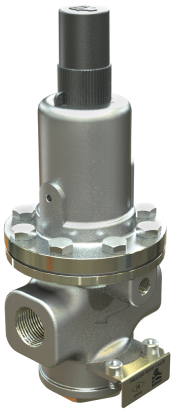When to use air valves and what are their benefits and types?
What are the benefits and function of an air valve?…
Did You Update BERMAD Connect Already? Check It Out
Update BERMAD Connect Today! Check It Out
BERMAD > Knowledge Center > Blog > Deluge Valve Leakage: Preventing Fire Pump Damage with Circulation Relief Valves

Fire pumps are used to supply fire protection systems with pressurized water to ensure the smooth operation of the system’s extinguishing devices. Because the fire pump’s performance has a direct impact on the performance of the entire system, it is crucial to ensure it is functioning correctly.
<< Get the white paper on how to deal with water pressure surge in Fire Protection Systems >>
Most Authorities Having Jurisdiction and the NFPA 25: Standard for the Inspection, Testing, and Maintenance of Water-Based Fire protection, recommend weekly “no flow” or “churn tests,” requiring the pump to be fully operational at a no flow condition for 10 or up to 30 minutes, depending on the pump type.
A fire pump is a mechanical device used to transform a chosen potential energy source whether it is electric or diesel fuel to kinetic energy in the form of flowing water. By closing the pump outlet valve (during a no-flow or churn test), we deprive the pump of its originally designed purpose of transforming this energy into the kinetic form of flowing water into the system piping. This energy then has to find an alternative transient. At this point, the only alternative for this energy is to transform into static pressure and localized heat created by the friction of the water as it churns around in the pump casing. Excessive heat in the pump can cause severe damage in a short period of time causing pump bearings to fail – as the bearings’ lubricants typically degrade twice as fast for each 10 degrees Celsius rise in temperature – while seals and packing begin to leak. In more extreme cases, the rise in temperature can cause the water to flash to vapor and cause cavitation damage to the impeller and pump internals.
To avoid this damage, we must lower the temperature of the water being churned in the pump casing or housing. This can be achieved by allowing a small amount of cooler water into the pump casing.
For all fire pump systems, except those using a cooling line to a diesel engine driven pump, a circulation relief valve should be fitted in order to extract heated water from the pump’s discharge. This valve should be fitted between the pump discharge side and the outlet control valve. This circulation relief valve should be set to open at the pump unit shutoff pressure plus the minimum pump suction pressure. It should allow a relatively small amount of hot water to constantly flow out of the pump casing, which is then replaced by an equal amount of cool unheated water entering the pump through the suction side, thus cooling the pump and its casing.

Fortunately, water has an exceptionally high “Specific Heat Capacity” in comparison to other commonly found materials, giving it an exceptional cooling ability. This means that only a relatively small amount of water has to be circulated or discharged to ensure that the temperature does not rise to damaging levels.

We got your email. Now, let’s make it personal...
